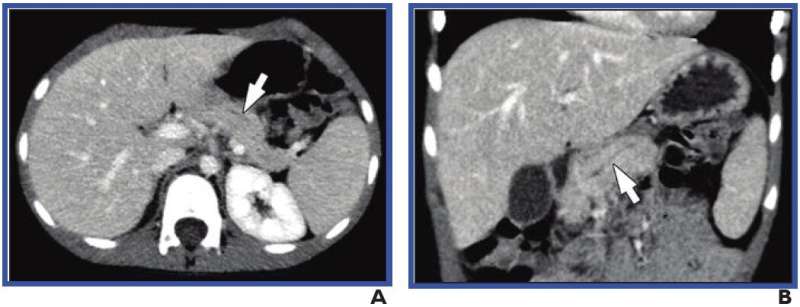CT, MRI for pediatric pancreatitis: Interobserver agreement

According to an open-access article in ARRS' American Journal of Roentgenology (AJR), interobserver agreement proved generally fair to moderate for most CT and MRI findings of chronic pancreatitis in children.
"This study highlights challenges for the imaging diagnosis of pediatric chronic pancreatitis," wrote first author Andrew T. Trout of Cincinnati Children's Hospital Medical Center in Ohio. "Standardized and/or objective criteria are needed, given the importance of imaging in diagnosis."
In Trout et al.'s retrospective study, CT or MRI examinations performed in children with chronic pancreatitis were submitted by six sites participating in the International Study Group of Pediatric Pancreatitis: In search for a cure (INSPPIRE) consortium. One board-certified pediatric radiologist from each of the six sites participated in independent image review. Three radiologists independently reviewed only CT examinations, whereas three other radiologists independently reviewed just MRI examinations. While measuring pancreas thickness and duct diameter, reviewers evaluated 13 categorical subjective features: 12 on both CT and MRI, 1 on CT only, 1 on MRI only.
In this study of six sites in the INSPPIRE consortium, interobserver agreement for findings of chronic pancreatitis in children was relatively high for CT for the presence of parenchymal calcifications (κ=0.81), pancreatic duct dilation (κ=0.63), and atrophy (κ=0.52); and for MRI for main and side branch pancreatic duct findings (κ=0.64-0.74).
Noting that duct findings showed the highest levels of agreement for both modalities, "agreement for subjective findings of atrophy was moderate, and agreement for parenchymal thickness (a quantitative measure of atrophy) depended on the location of measurement, with the best agreement observed in the pancreatic body," the authors of this AJR article concluded.
More information: Andrew T. Trout et al, Interobserver Agreement for CT and MRI Findings of Chronic Pancreatitis in Children: A Multicenter Ancillary Study Under the INSPPIRE Consortium, American Journal of Roentgenology (2022). DOI: 10.2214/AJR.21.27234



















